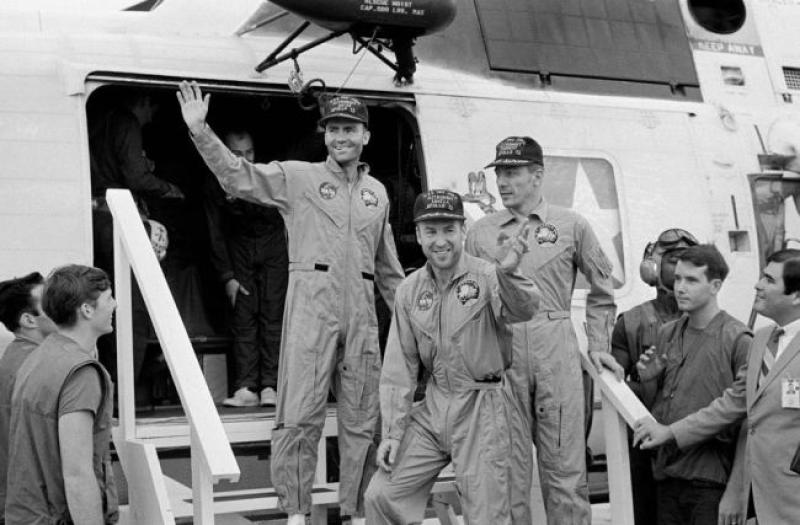Apollo 13 at 50: How NASA turned near disaster at the moon into a 'successful failure' in space
Category: Health, Science & Technology
Via: jasper2529 • 5 years ago • 8 commentsBy: By Chelsea Gohd - Space.com



Fifty years ago today (April 11), three astronauts launched to space, poised to be the next humans to walk on the moon. But things didn't exactly go according to plan.
Famously described as a "successful failure," the Apollo 13 mission almost ended in complete and utter disaster. However, while the astronauts never made it to the moon's surface, their very survival serves as a testament to the human spirit and incredible ingenuity.
"Our goal 50 years ago was to save our valiant crew after sending them around the moon and return them safely to Earth," NASA Administrator Jim Bridenstine said in a statement . "Our goal now is to return to the moon to stay, in a sustainable way. We are working hard to ensure that we don't need to respond to this kind of emergency in Artemis, but to be ready to respond to any problems we don't anticipate."
( Artemis is NASA's current program of crewed lunar exploration, which aims to land the first woman and the next man on the moon in 2024.)
At 2:13 p.m. EST (1813 GMT) on April 11, 1970, commander James "Jim" Lovell , command module pilot John "Jack" Swigert and lunar module pilot Fred Haise took off without a hitch from Launch Complex 39A at NASA's Kennedy Space Center in Florida. The astronauts were on their way to the moon. But about 56 hours into the mission, things went seriously awry.



This entire episode is a testament to why we should listen to experts.
This entire episode is also a testament proving that experts are also fallible and often make mistakes.
It's testament to how to act in the face of novel.
The book "Failure is not and Option" by Gene Kranz is a fantastic book to learn about the mission and one to study about leadership.
My father was part of the Gemini program in the 1960s and met Gene. I remember him saying that Kranz and many others at the time lived on coffee and cigarettes, and had a permanent grasp on their slide rules.
Not a well known fact about Apollo 13. Jim Lovell, who is a retired U.S. Navy Captain had a small part in the movie Apollo 13 and played the captain of the USS Iwo Jima (LPH-2) which was the ship that retrieved the Apollo 13 crew and capsule.
Friend of mine and one of the original founders of the American Indian Society for Engineers and Scientists (AISES), Dr. Jerry Elliott (Cherokee) was on the response team. He came up with the idea of the duct tape and insulation foam block. Hearing the stories from him gave me the willies.